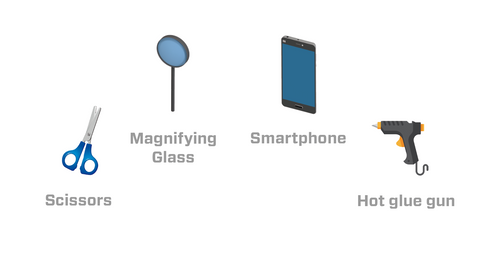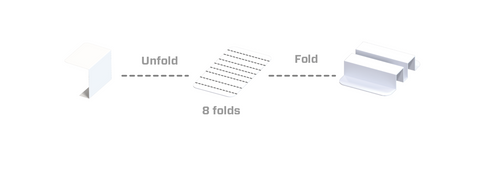It is our responsibility as designers & head business owners to own the impact we create after design, develop & manufacture our products.
We believe the future of fashion is technological, transparent, sustainable, connected and automated in every part of the chain — and it all comes down to people. From the people who make the clothes to end customers.
Since 2002, global clothing production has more than doubled, the average consumer buys 60% more, and each garment is kept for half as long. Today, just 1% of clothing is recycled back into clothing, 73% goes to landfill.
Second to oil, the clothing and textile industry is the largest polluter in the world. We’ve learned that waste is a design flaw (in every part of the chain) and that the most advanced products are the ones that will make the least environmental impact.
BUSINESS NEEDS TO STEP UP
The global urgency for business to play a bigger societal role is difficult to ignore. The fashion industry is broken. It is time for designers, brand owners, investors, manufactures and customers to reconstruct the current broken system.
Fashion has always been a hotbed for innovation — from the invention of the sewing machine to the rise of e-commerce. Today we have robots that sew and cut fabric, to AI algorithms that predict style trends and even VR mirrors in dressing rooms; technology is automating, personalizing, and speeding up every aspect of fashion.
There has never been a better and most exciting time to innovate and reinvate in the apparel industry.
Just as much innovation goes into the design process of your MACHINA products in what they are made of — and how they’re made — as into what they do. You can see that in our new line of products, they are made from different sustainable materials without compromising quality.
We are trying to minimize or eliminate waste in the product creation process. Therefore we have adopted a circular economy model as part of our business model, because the longer you use your MACHINA products, the better it is for our planet.
The Circular Economy
A circular economy looks beyond the current take-make-dispose extractive business model and aims to redefine growth, focusing on positive society-wide benefits.
It is based on four principles:
- Design for longevity with high quality products that can last for a long time and can minimize their impact on ecosystems
- Use raw materials, materials and fabrics with a high environmental and social value
- Minimize or eliminate waste in the product creation process
- Reduce the environmental and social impacts of activities and acknowledge everyone’s contribution to the product value
In fashion, a circular economy requires the combination of new garment design strategies, sustainable materials, advanced recycling technologies, alongside new service-oriented business models, to create desirable, low-impact & long-lasting garments.
To really Make Fashion Circular, businesses, governments, innovators, and citizens need to join forces. Some of the pioneers for this model would be Stella McCartney, Nike, among others.
Making fashion circular is one of the biggest and most ambitious challenges that we will face as a company. To design and develop fashion tech products that generate the less worldwide impact as possible without limiting our creativity. It is our objective that our products can easily adapt to growth, style, trend, gender, activity and purpose through our high quality choice of materials and timeless designs.
Overall a circular economy requires that we move away from the consumption of finite (non-renewable) resources and that we design waste out of the system. We have begun to design with an end in mind without limiting our creativity.
CIRCULAR INITIATIVES & PARTNERSHIPS
About 15% of fabric intended for clothing ends up on the cutting room floor. We will design a annual collection composed out of two “survival” garments completely made out of fabric scraps from which we will distribute to certain organizations in Mexico and support certain causes like immigration, addicts, and people in need from the penitentiary system.
** This initiative will begin to take place by Fall 2020.

IMMIGRANTS FROM LATAM /// Number of incoming foreign migrants from Latin America and the Caribbean in Mexico from January to October 2018, by country of origin.

The graph shows the leading countries of origin from incoming foreign migrants from Latin America and the Caribbean in Mexico between January and October 2018. In that period, almost 51 thousand people whose country of origin was Honduras registered as incoming migrants with the Mexican authorities.
The second most important country of origin for Latin American and Caribbean migrants entering Mexico was Guatemala, with almost 42 thousand people.
More than 70 million people globally were forcibly displaced from their homes in 2018.
PARTNERSHIPS
Border Angels- non profit organization that advocates for human rights, humane immigration reform, and social justice with a special focus on issues related to issues related to the US-Mexican border.
We choose to support Border Angels because they are stepping up their actions on behalf of migrants on the southern border in the middle of the war of building a wall between USA and Mexico.
Iglesia @ EDO DE MÉXICO---- The nuns feed about 2,500 migrants once a day — rice, beans, eggs and bread — though donations are scarce and local traders often try to gouge prices.
We choose to support a local church @ EDO DE MÉXICO because the mother superior has been very much involved with all immigrants crossing through Mexico using "La Bestia" (The Beast) as a medium. Central American migrants are fleeing extreme poverty and grave dangers at home. But it is the poorest of the poor who are forced to take the train. Besides the grave dangers, people crossing are in very much need of supplies.
ANEXOS — Drug Rehabs in Mexico
Mexican authorities provide very limited treatment for addicts, and almost no residential care, which means families struggling to cope rely almost exclusively on privately-run centers known colloquially as anexos.
Anexos (informal Mexican rehabilitation centers) are owned and run by padrinos — godfathers. In the Mexican drug world a padrino, or madrinafor a woman, is any former addict who has been able to stay clean.
Guerreros Hermanos Texcoco, Estado de Mexico, Mexico
We choose to support public drug rehabs in Mexico because they have limited access to supplies. It is not humane to try to improve ones health in such poor conditions.
PRISONS — in Mexico
Before MACHINA we had Plan de Escape; an initiative focused on providing design, fashion, photography and business workshops as a form of rehabilitation. Coming back to Mexico’s penitentiary system to help and provide some sort of help is something that we continue to pursue. A second chance into society. Contrary to other nations, Mexico’s penitentiary system is very much governed by corruption and abuse. We have partnered with the following institutions to upgrade living conditions inside prison.
OUR PRODUCT MATERIALS
Recycled Polyester: a green, sustainable alternative to virgin polyester
Unlike polyester, recycled polyester uses PET as the RAW material. This is the same material that is used in clear plastic water bottles, and recycling it to create the fabric prevents it from going to landfill.

Textile recycling technology has immense scope where polyester is concerned. This technology has nominal waste, consumes limited energy and causes very little pollution.


♻️ You can purchase all of our products made from this recycled polyester here.♻️
YKK Zippers: The company’s founding philosophy is the ‘Cycle of Goodness’, meaning that corporate responsibility, transparency and respect for the world we live in
Not only do YKK Zippers have the state of the art technology and unrivaled reputation, they work very hard to be a sustainable company in every aspect of the value chain, from raw material procurement to the finished article, YKK follows the most stringent ecological and ethical standards, considering not only the impact on the environment, but also the health, safety, and human rights of its workers.
Scafé®Yarn
Ever imagine that the coffee we drink is transformed into the apparel we wear? With a low-temperature, high-pressure and energy saving process S. Café® technology combines coffee grounds onto the yarn surface, changing the characteristics of the filament, and offers up to 200% faster drying time compared to cotton. S.Café ® fabrics will provide excellent odor control, UV protection and fast drying benefits.
TECHNOLOGY
Even when you’re done with your device, chances are it still has more to give to the world. We’ll help you recycle it free of charge. Just back it up, erase the data and return/ship to a recycling partner, so it can be recovered and reused. Your device will be recycled as part of our workshop sessions.

PACKAGING DESIGN
Our mission with our packaging design for all of E.S.P. garments was to design purposeful packaging, made from materials that can be repurposed, recycled or biodegrade. These are some of the different applications we came up with that you can build or improve and give your MACHINA packaging a secondary use.
Got new ideas? Don’t forget to tag us and share! #SustainableMachinaWT
Best ideas will be featured on our social media.
PACKAGING OVERVIEW

RECYCLE PACKAGING PROJECT #001 - THE MOBILE PROJECTOR

This is the list of extra materials and tools to make your Machina packaging into a mobile projector.





Today, just 1% of clothing is recycled back into clothing, 73% goes to landfill. Up to 95% of the textiles that are land filled each year could be recycled.
At MACHINA it is very important to establish new service and business models to extend our product’s life cycle. We are excited and are working very carefully by maximizing the resources that we have and continue to fortress better design solutions for a sustainable future.
THE FUTURE OF BUSINESS, SPECIALLY THE APPAREL INDUSTRY IS COLLABORATIVE AND ECOSYSTEM.






